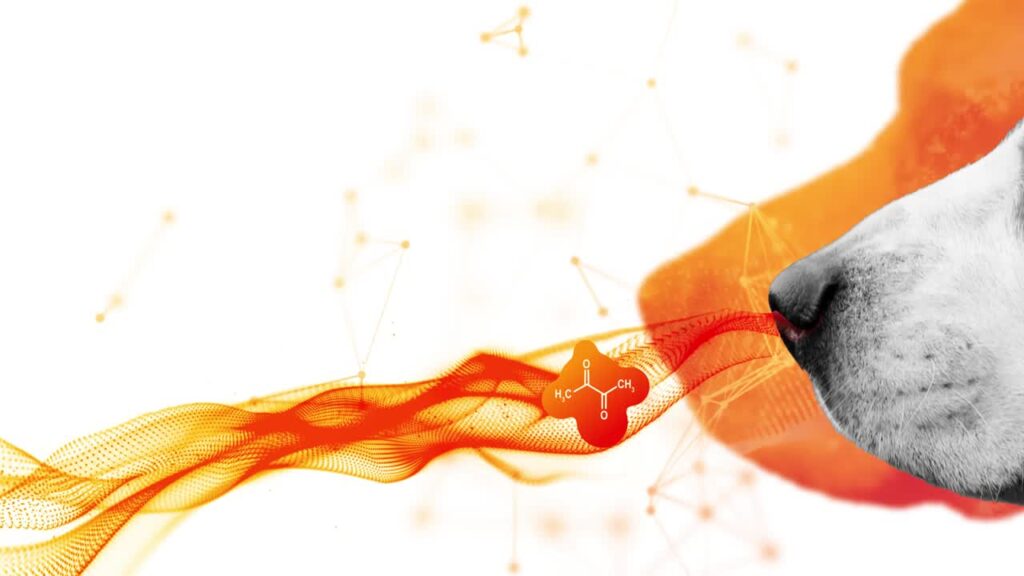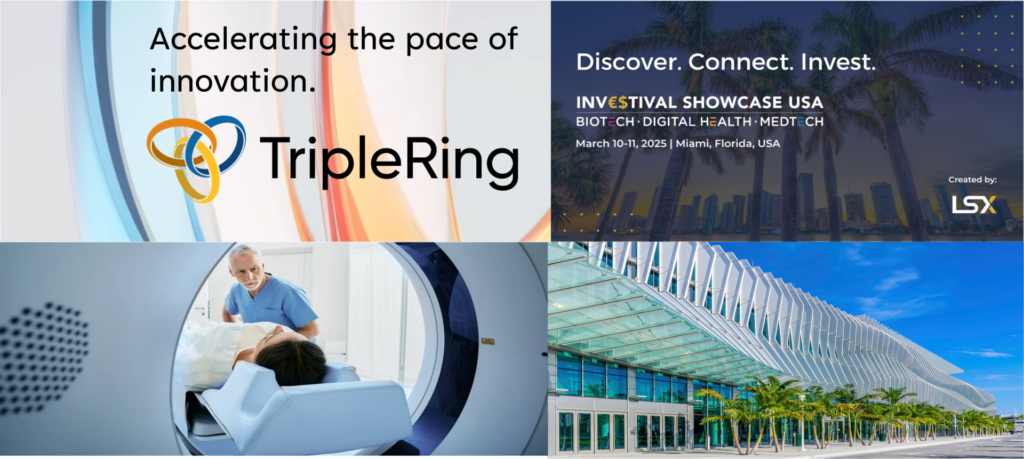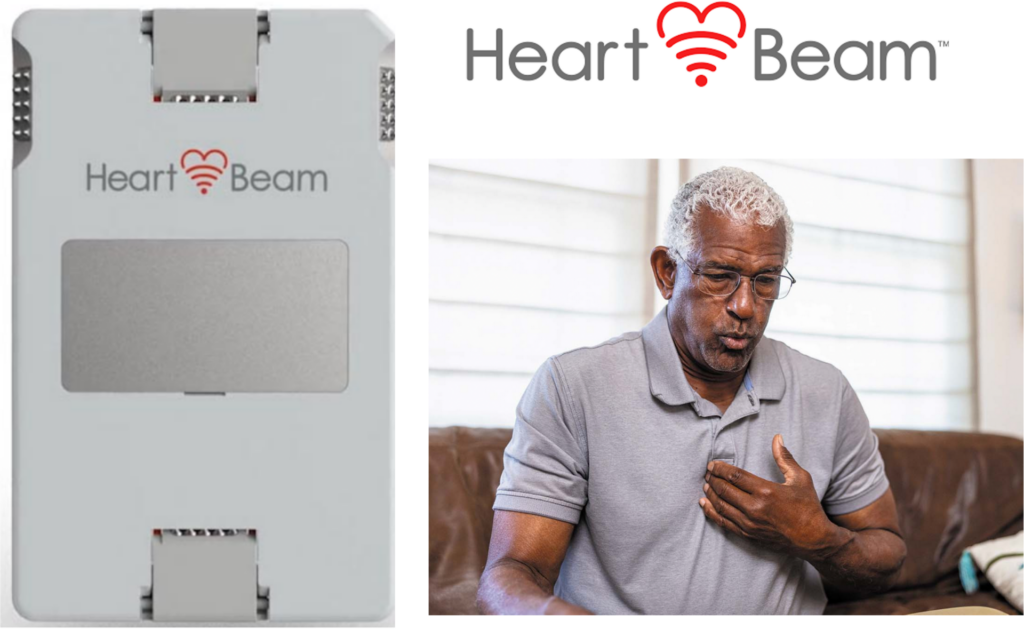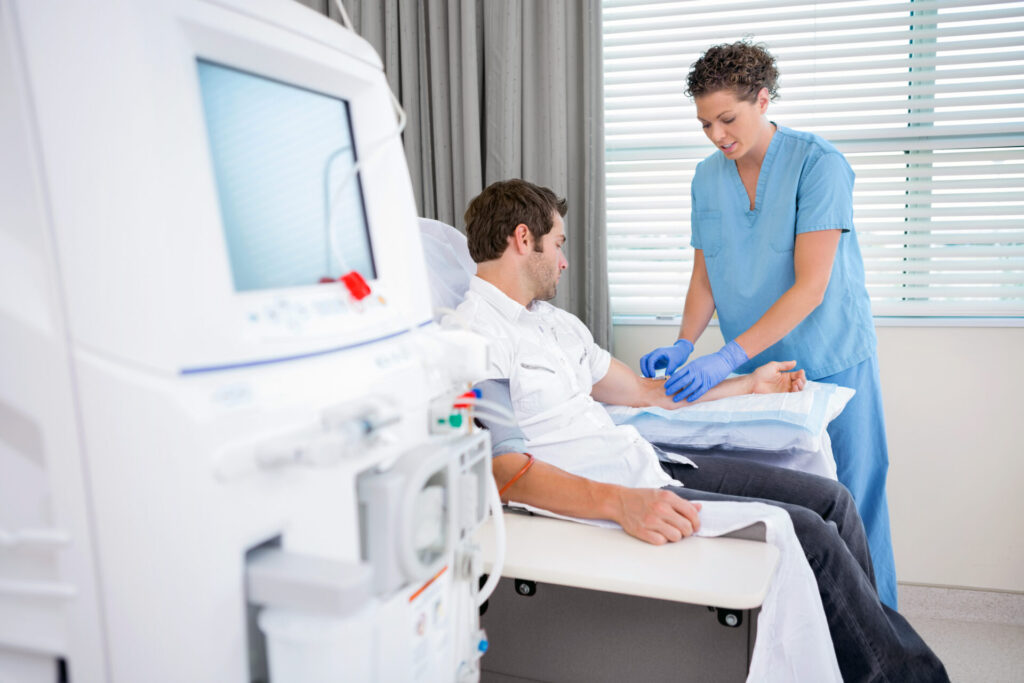Triple Ring’s Ryan McGuinness will be attending the 32nd annual Medical Device and Digital Health Conference hosted by Wilson Sonsini Goodrich Rosati. As a trusted partner to medtech and life science innovators, Triple Ring is proud to join industry leaders, investors, and entrepreneurs at one of the most respected gatherings in the field. This event provides a unique platform to explore the latest trends shaping the future of healthcare, from regulatory shifts and investment strategies to breakthrough technologies in diagnostics, devices, and digital platforms. Ryan is especially looking forward to engaging in discussions around alternative financing models such as build-to-buy, the evolving role of AI in medical devices, and how startups can navigate today’s complex commercialization landscape. With deep experience supporting innovative products from concept through clinical validation, Triple Ring is eager to share insights and connect with fellow leaders driving impactful change in healthcare. If you’ll be at the conference and want to learn more about how Triple Ring partners with companies to accelerate innovation, de-risk development, and bring bold ideas to life, don’t hesitate to connect with Ryan.
Stay tuned for our key takeaways following the event—looking forward to an inspiring and productive time!

Triple Ring’s CEO, Joe Heanue, was featured in a white paper authored by Glenn Snyder, MedTech Practice Founder and Partner at Monitor Deloitte. The article revisits and updates a topic that Deloitte has been monitoring since 2017 – The disruption and evolution of investment in early-stage medical technology. In the MedTech innovation landscape, startups are increasingly caught in a precarious position—trapped between early funding rounds and the long, challenging journey of developing a market-ready product. This journey can span a decade or more, with financial, regulatory, and reimbursement hurdles adding layers of risk and uncertainty. To navigate this environment, alternative financing models such as build-to-buy are emerging as promising solutions. Under this model, a strategic MedTech company agrees to acquire a startup—or its assets—at a predetermined price once certain milestones are reached. For large MedTech (and Life Science) corporations, outsourcing innovation to a startup can create an off-the-balance-sheet way to fund innovation – avoiding internal R&D expenses and protecting EBITDA. For startups, these structures help derisk funding, provide access to market expertise, access to manufacturing and commercialization teams, and provide a possible path to exit.
To check in on this evolving investment landscape, Deloitte interviewed 16 leaders from VC, PE, CVC firms, and strategic investors, focusing on five critical topics shaping medtech financing today. These insights underscore the growing recognition of alternative financing models and their role in supporting early-stage medtech companies through a complex commercialization journey.
The white paper can be found by clicking this link


Triple Ring will attend the 9th Annual Rosenman Symposium at UCSF’s Mission Bay campus. Each year the Rosenman Symposium is a marquis event in the San Francisco Bay Area, bringing together the most forward-thinking minds in medtech, digital health, and life sciences innovation.
This year’s symposium promises to be a powerful convergence of entrepreneurs, investors, clinicians, and strategics—all united by a shared mission: advancing health innovation to improve lives.
If you’re attending, we’d love to meet you there! Reach out to us in advance or find us during the networking sessions—we’re always open to new conversations, partnerships, and possibilities.
Triple Ring is proud to host an in-person evening event at our Silicon Valley headquarters with Bay Area Microfluidics Network. Join us for a great evening at the cutting edge of microfluidics as we discuss Clogs and Bubbles: Common Challenges with Scaling Microfluidics. Bay Area Microfluidics is a community of experts and enthusiasts in the microfluidic industry who gather to teach, learn, share challenges and successes as the push this innovative field forward. Triple Ring’s own Rachel Gerver will present alongside Synthego’s Marc Chooljian. Buffet dinner, networking with the Bay Area’s best microfluidic talent, tours, and demos are also available. Register here!

Triple Ring partner and client, Canaery has been featured in a Wired Magazine article about their breakthrough Nose to Computer Interface technology. The article describes the company’s partnership with the US Department of Energy to harness the mammalian olfactory system to detect and monitor compounds in air. The approach enables users to decode odors that an animal smells in real time and gather critical information about hazards, threats, and contraband. We congratulation Canaery on the article and are proud to have worked alongside the team to create this amazing technology.

Triple Ring will once again participate and present at the LSI USA event in Dana Point, CA. This year, Ryan McGuinness is featured on an expert’s panel about cross border partnerships that drive healthcare innovation. The panel’s title is ‘The Case For Asia’ and includes experts from around the Pacific Rim who are collaborating and introducing novel technologies to address critical unmet needs. Triple Ring’s CEO, Joe Heanue, will also be present. Joe and Ryan will spend the week discussing our Corporate Growth Lab where we create growth drivers for the world’s top tier medical device and life science companies. Feel free to connect with us at the conference or through the Contact link below.

We are excited to be Gold Sponsor at this year’s LSX Investival Showcase USA in Miami Beach. Triple Ring’s Ryan McGuinness will lead a Corporate Venture Capital expert’s panel entitled CVCs: What They Want, and How They Align With Medtech and Digital Health M&A and BD. Panelists include Katerina Fialkovskaya, Investment Director, Philips Ventures, Rameen Rana, Investor, Samsung Next, and Jeff Weness, Head of Digital Investments, Otsuka Precision Health. Triple Ring’s CEO, Joe Heanue, will also be attending. The Investival once again will be an important venue for exchanging ideas on how to best drive MedTech and Life Science Innovation to the benefit of patients worldwide.

Today Heartbeam Inc., a Silicon Valley based medical device company, announced FDA 510(k) clearance of the HeartBeam system – the only cable-free, credit card-sized device that captures patient heart signals to provide comprehensive arrhythmia assessment.
HeartBeam’s system is a synthesized 12-lead ECG integrated with AI-based classification algorithms for heart attack detection, allowing physicians to detect non-life-threatening arrhythmias for patients in the clinic or at home. Physicians are able to identify cardiac health trends and acute conditions and direct patients to the appropriate care – all outside of a medical facility
Triple Ring is proud to have partnered with HeartBeam in the design and development of this cutting edge platform which redefines the future of cardiac health management. We congratulate HeartBeam on this critical milestone and look forward to more breakthroughs in the future.

This article was published by Deloitte on September 17, 2024. Click Here to link to the original article.
While interest in medical technology (medtech) appears to be growing—among both venture capital (VC) firms and private equity (PE) companies—investment strategies seem to be evolving. VC investments in medtech reached a two-year high in the first quarter of 2024, although deal volume remains lower than in 2022, according to a report.1 Those firms typically focus on helping early-stage companies grow and build their brand. While there can be substantial risk, there is also the potential for significant returns
PE firms, by contrast, tend to invest in more mature companies, often taking a majority stake. The risks, as well as the returns, are typically lower. A growing number of large medical device manufacturers seem to be spinning off slow-growing segments of their companies so that they can focus on high-growth areas. This restructuring trend has created an investment opportunity for some PE firms. Both PE and VC investors appear to be homing in on companies that are focused on cardiovascular disease, surgical robotics, and women’s health.2
Silicon Valley-based Triple Ring Technologies, Inc. is an investment and development company that helps innovators and entrepreneurs solve problems and launch breakthrough products. Joe Heanue, Ph.D., the company’s CEO, has helped develop a wide range of medtech devices in his career. He says Triple Ring, which he co-founded in 2005, sits at the intersection of science, technology, and business (the triple rings). I recently had an opportunity to talk with Joe about some of the investment trends he is seeing in the medtech space. Here’s an excerpt from that conversation:
Glenn: How have you seen investment strategies change over the past couple of years?
Joe: A lot of investment dollars were flowing into start-ups and venture-backed companies during the pandemic as investors and entrepreneurs jumped in to meet the COVID-19 challenges. At the same time, some government programs provided funding for diagnostics. The net effect that I saw was over-investment in the sector. Inevitably, only a few players ended up benefiting, and that cast a bit of a shadow over investments in diagnostics. I also saw a significant burst of VC funding activity in medtech as the pandemic progressed but, by early 2023, there was a contraction. Some VC investors supported existing portfolio companies at the expense of new investments. This is when I started to observe a transition of investment activity, from venture capital to corporate venture and private equity. A lot of creative things are taking place in that middle ground. For example, some organizations are executing an interesting model in which they invest in R&D alongside a commercial chassis to build out a platform. These approaches are generating buzz around oncology, cardiovascular disease, and orphan diseases. Another example is known as build to buy. These partnerships are collaborative, outcome-focused, and financially flexible to balance risk when bringing new and innovative products to market. In general, I think we’re likely to see more examples going forward of large corporates trying to fill the gap left by under-investment in medtech by traditional venture firms.
Glenn: What types of companies do you think are getting more attention from investors?
Joe: Many VC investors appear to be paying close attention to their existing portfolios. But we see PE investors working with corporate venture in interesting ways. This is a reflection of the fact that some medtech companies have grown substantially through acquisitions over the past couple of decades and are starting to carve out some of their smaller businesses. The carve-outs tend to be more nimble and better able to respond to changing markets.
Glenn: What do you think is the exit strategy for venture-backed medtech companies?
Joe: Smaller venture-backed companies often see an exit strategy through private equity investment. Within smaller private equity-backed companies, the exit strategy is often a move toward a larger PE group; and the larger PE groups often see their exit as an acquisition by a large corporation.
Glenn: You refer to your business model as “venture building.” What does that mean?
Joe: We do a mix of investment and development. Our model is to invest in projects we work on and work on projects that we can invest in. At the same time, we try to bring a network of third-party investors to the table. We are a hub that helps to connect investors and innovators.
Glenn: You have developed a number of medtech products in your career. What gets you excited about this space today?
Joe: Incredible advancements are being made in biology with genomics, proteomics, and multi-omics as well as with cell and gene therapies. At the same time, computing has become less expensive, more scalable, and more powerful. Companies are often able to develop and introduce sophisticated products through multidisciplinary efforts much faster and more efficiently than ever. Every year, the industry’s ability to develop effective solutions to complex clinical problems increases.
Glenn: Is there a connection between biopharma and medtech?
Joe: Absolutely. Our business is split roughly 50/50 between medtech and biotech/biopharma. The lines continue to blur. In cell therapies, for example, manufacturers manipulate patient’s cells using a mix of manual labor, complex medical devices, and automation. The next generation of cell therapies will likely be developed and administered at the patient’s bedside. Collecting a patient’s blood, sending it to a manufacturing site to be developed into a therapy, and then sending the therapeutic back to the hospital is an expensive and time-consuming process that can take weeks. The next generation of therapies will likely move everything closer to the patient.
Glenn: Is artificial intelligence [AI] being integrated into medtech devices?
Joe: Medtech investors are evolving their approach as they move from a focus on tools and hardware to a focus on apps, AI, and data. If you are launching a new product, investors are going to ask if there is an AI component. Investors will also want to know about the data being generated and how it is being used. When we talk to people about the future of surgery, they are increasingly talking about digital surgery. They want to know how data can make the surgical process more effective. For example, prior to recommending a certain surgical procedure, AI could be used to evaluate a patient’s health data and demographics to predict the likely outcomes and identify possible complications or adverse events. AI, combined with data, is already impacting how some clinical procedures are performed. A new generation of clinicians that has grown up with technology is helping to drive this trend. They expect to have access to sophisticated tools, data, and connectivity.
Glenn: Sophisticated medical devices sometimes can only be used by highly trained clinicians. It seems there is a trend toward democratization in health care and a focus on the simplification of care. What are you seeing?
Joe: The democratization of health care can help move care from the hospital to ambulatory surgery centers, out of surgery centers to a physician’s office, and out of the physician’s office into the patient’s home. There is a lot of interest in devices that can help move care delivery closer to the patient and improve convenience and reduce costs. Technology is making a variety of procedures, particularly surgical and interventional, more accessible. Democratization also is being accelerated by compressing the time needed to master a given procedure—skills that once took years to acquire now can be learned in a few months.
Glenn: What about GLP-1 drugs? How do you see this impacting investments?
Joe: We are starting to see interest move from the pharmaceutical sector into the medtech space. Investors are interested in delivery devices, wearables, compliance technology, tracking tools, and AI tools that can help match patients to the most effective drugs administered optimally.
Conclusion
Stepping back, it’s interesting to reflect on the dynamic nature of medtech innovation and the evolution of health care markets. As challenges arise in one portion of the innovation cycle, they are often offset by advancements in another. For example, as value-based models put pressure on hardware and equipment costs, AI shows potential for improving system performance and cost efficiency. This dynamic is also true of the funding environment—as some VC investors try to support new products and companies, some PE firms have helped fill gaps by taking riskier positions that were once solely the domain of VCs. Finally, governments can play a role in keeping the wheels of health care innovation churning. These trends appear to reflect a broader shift toward more collaborative, outcome-focused, and financially flexible approaches in medical device development, aiming to balance innovation with risk management.
By Glenn Snyder, principal, Deloitte Consulting LLP

FAQs
What is Corporate Venture Building?
Corporate Venture Building is the practice of building a separate venture from scratch – A new brand, team, program, revenue stream, or P&L is created to target untapped opportunity spaces – new customer segments, technologies or capabilities – outside of a core existing businesses. This effort can be a fully internal, adjacent, fully external, or hybrid program.
Do Private Equity firms invest in startups?
Private Equity (PE) firms are increasingly investing in startups, though selectively. PE firms traditionally invest later in a company’s lifecycle – around the time that companies begin to generate revenue from their products or services. Key value propositions that PE firms bring to portfolio companies include growth capital, operational efficiency and a tight focus on profitability. Most pre-revenue startups are not a fit for PE, however we are seeing PE firms investing earlier especially for high growth potential companies that are a short time away from revenue generation.
Is Triple Ring a CDMO?
In the MedTech industry, a CDMO, or Contract Development and Manufacturing Organization, is an external partner for the design, development, and manufacture of medical devices and diagnostic platforms. Triple Ring does perform the function of a CDMO, and quite a lot more. Beyond our Product and Technology Development (CDMO) business we are also a Corporate Venture Builder and Translator of technology from early R&D into products. The Translation work is performed primarily through contracts with the US Government.
Congratulations to our Agility Labs member, CytoTronics, on closing $9.25 Million in seed funding, led by Anzu Partners with participation from Milad Alucozai (BoxOne Ventures) and institutional investors, to revolutionize drug discovery and phenotypic screening. Triple Ring is proud to be a part of the journey to provide the facility, technology, and mentorship support to CytoTronics from the very beginning. If you are interested in learning about CytoTronics and its complementary metal-oxide-semiconductor (CMOS)-powered drug discovery platform, please visit https://cytotronics.com/. If you are looking for a lab space to launch your innovative business, Agility Labs offers a flexible incubator for emerging life sciences, medical device, and technology companies in Silicon Valley and Boston. For more information, please visit our website at https://www.agilitylabs.org/ or email your inquiries to info@tripleringtech.com.